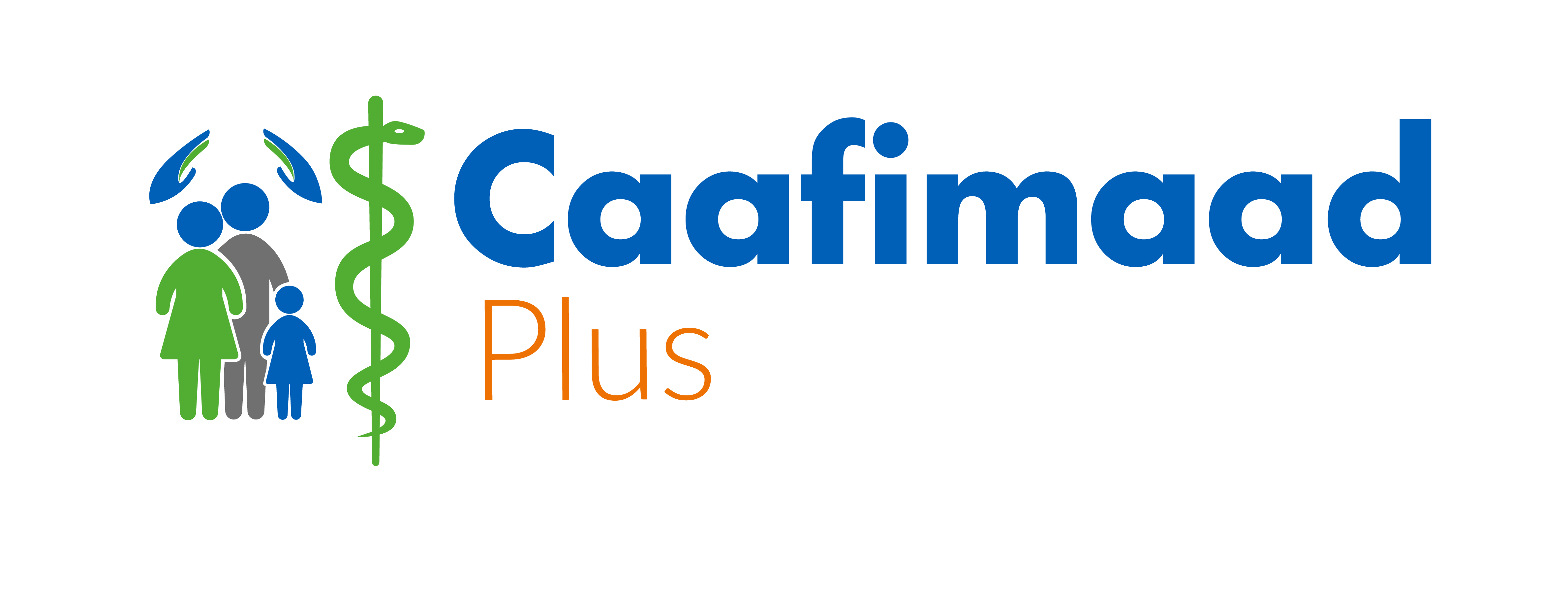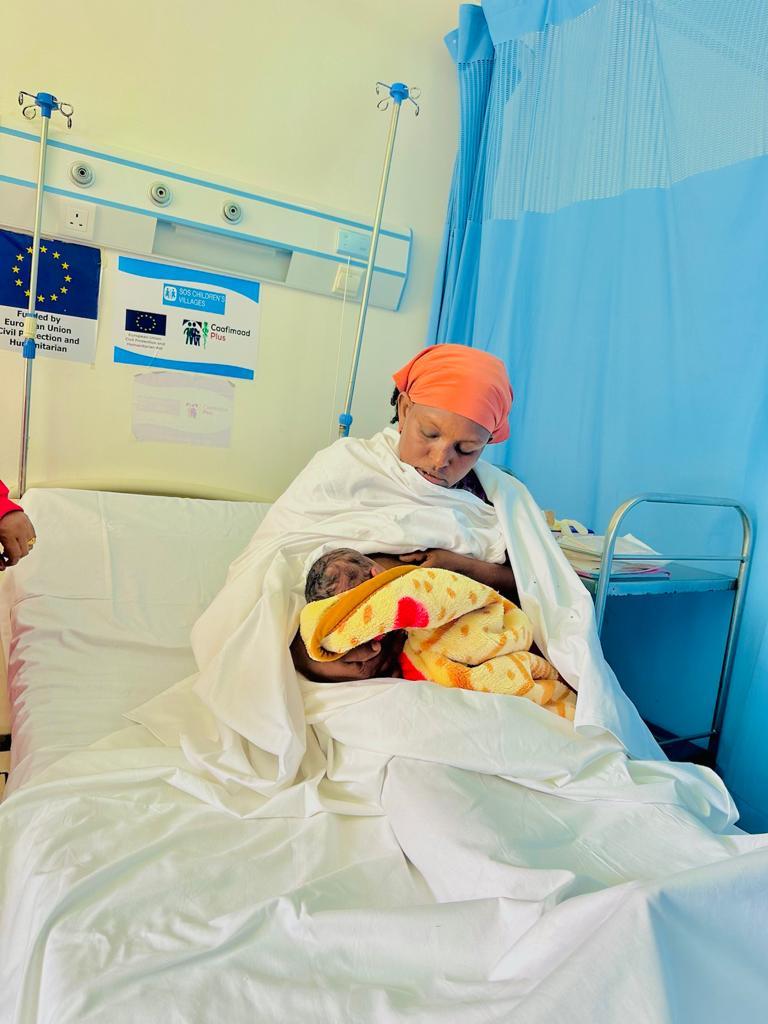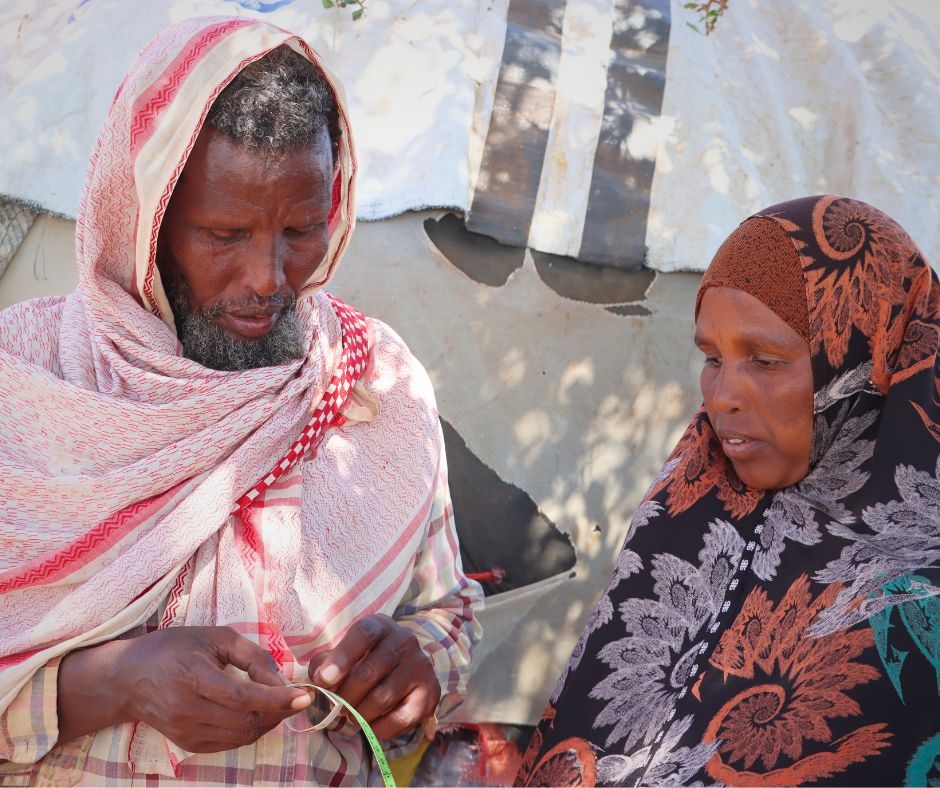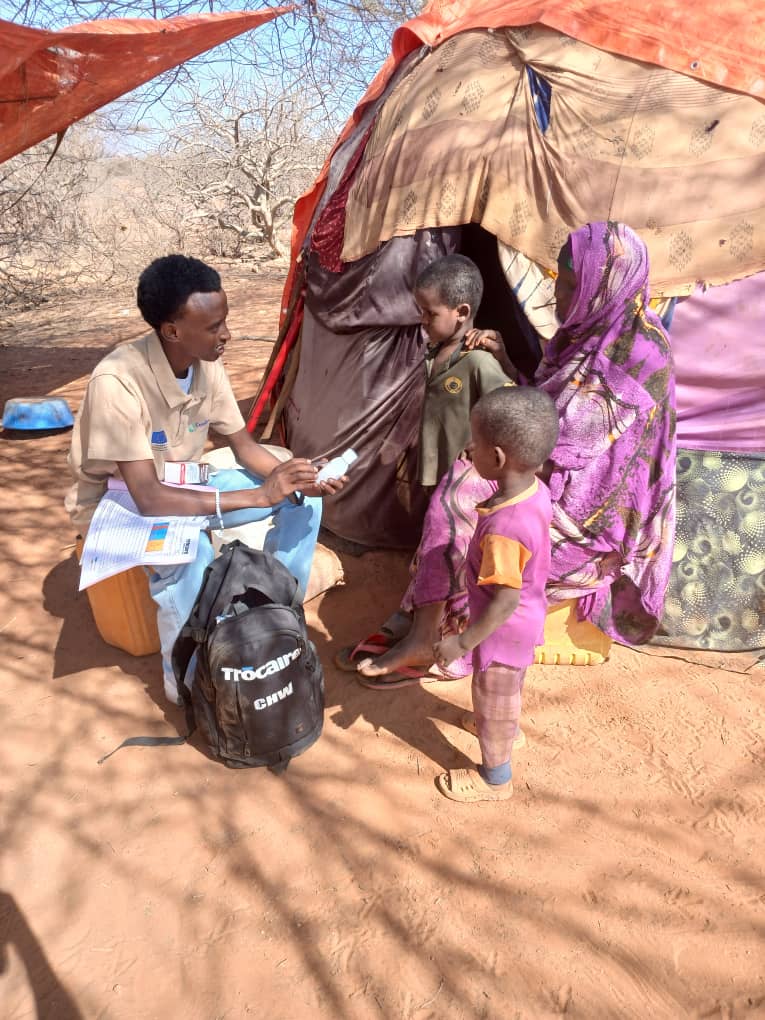Alasay Ahmed’s story is one of resilience and perseverance in the face of adversity. After experiencing the heartbreak of losing all nine of her previous children, she found herself pregnant once again, but this time filled with fear and stress. Her village lacked basic health services, and the only services available were traditional birth attendance (TBA) as a result, she had never received the antenatal care that could have helped her previous children survive.
As the due date approached, Alasay felt the weight of the community’s social pressure on her shoulders. Childless women in her community faced discrimination and stigma, and she feared being divorced if she was unable to give birth to a healthy child.
“I finally gave up. I was convinced I could not give birth to a live baby, so I looked for better health care options.” Said Alasay.
With increasing conflicts and limited resources, Alasay and her family were forced to flee their home, which was 120 KM away from Mogadishu, and settled with their relatives in Balcad. She set off from Balcad in search of medical assistance for herself and the unborn baby. She heard of a woman from her village who had received help from SOS Hospital, which prompted her to seek help from the hospital. SOS Children’s Villages runs a referral hospital with funding from the European Union Humanitarian Aid Agency through the Caafimaad Plus Consortium to provide integrated emergency life-saving assistance to crisis-affected populations in south central Somalia.
The doctors informed her she had issues in previous and present pregnancies. These pregnancy issues included stillbirth, miscarriage, and other unwanted conditions, thus recommending caesarean section delivery. She was also warned not to attempt normal delivery at the TBA, as that will affect her baby’s survival.
The doctors at the maternity section succeeded in the operation a few days later and Alasay finally had a live baby. She was referred to the postnatal care unit, where she received treatment and care. Midwives brought her a healthy baby boy for breastfeeding. It was an unbelievable moment for Alasay. She couldn’t hold back her tears of joy. “Finally, after experiencing nine stillbirths, I feel fortunate. Thank God and thank you, doctors,” noted Alasay. She did not expect to see a live baby.
The doctors admitted her in the wardroom for four days, receiving additional care. The midwives and nurses wanted to ensure her situation stabilized before releasing her in four days. During this period, she received health education on breastfeeding, hygiene, immunization, and psychosocial support.
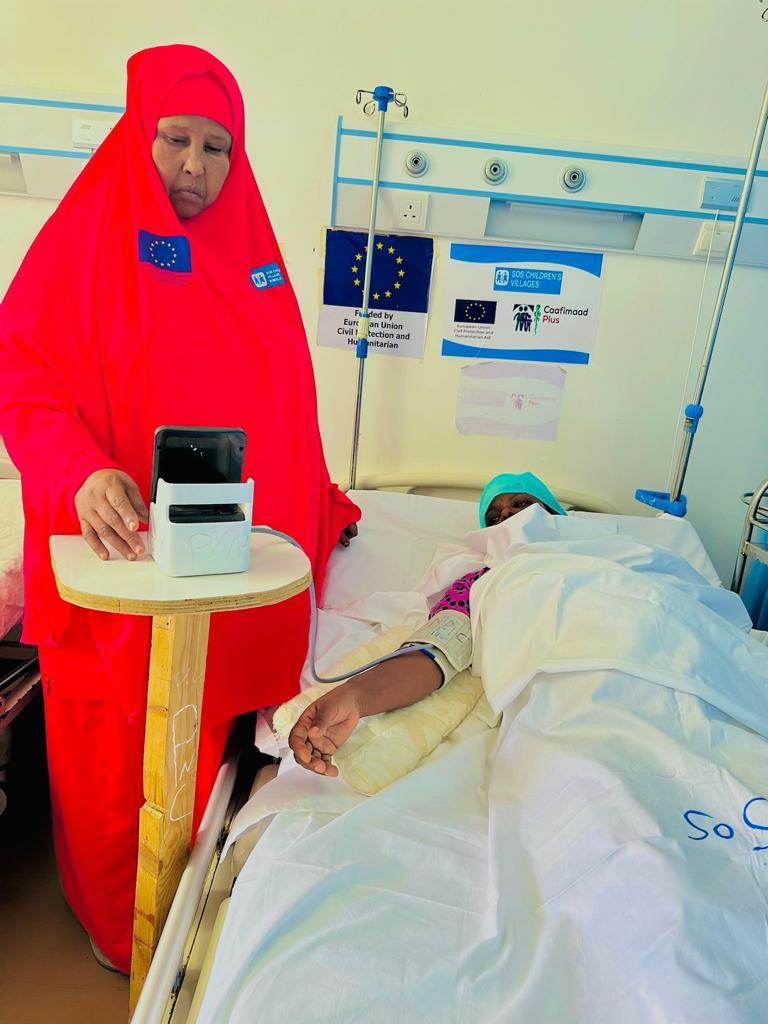
It was Alasay’s first visit to SOS Hospital and her first time in Mogadishu. She lived in a small village called Jariirow in Somalia’s Lower Shabelle region with her unemployed husband, whom she married in 2010.
As a result of the clash between the government’s forces and non-state actors, they fled Jariirow thirty kilometers from Jowhar district in search of safety. The village was also affected by the drought, which stretched its few resources and left it without healthcare services.
Somalia is one of the countries with the highest birthrates (6.42 average birthrates in 2020), with women giving birth every year and an average of 8 children for most families. Because of the lack of adequate family planning and the inherent polygamous culture, women who do not give birth continuously would face stigma, divorce, or gender-based violence.
Alasay’s story highlights the importance of access to basic healthcare services, particularly for expectant mothers and their babies. It also underscores the need to address the social pressures and stigmas that can compound the challenges faced by women in these situations. With continued support and advocacy for better healthcare services and social change, more women like Alasay may be able to overcome their challenges and build a brighter future for themselves and their families.
The Caafimaad Plus Consortium’s integrated approach to addressing the crisis in Somalia is a commendable effort in providing humanitarian assistance to those in need. By employing a mix of strategies, such as running bigger referral hospitals, using mobile clinics in hard-to-reach areas, providing social behavior change communication, mental health counseling, and building referral pathways for affected families, the consortium is able to provide life-saving assistance to those who need it most. This integrated approach addresses the crisis emanating from multiple factors in Somalia, making it a comprehensive and effective solution to the humanitarian crisis. Overall, the work of the Caafimaad Plus Consortium serves as an important example of how multiple strategies can be combined to provide effective, sustainable, and life-saving assistance to those in need.
